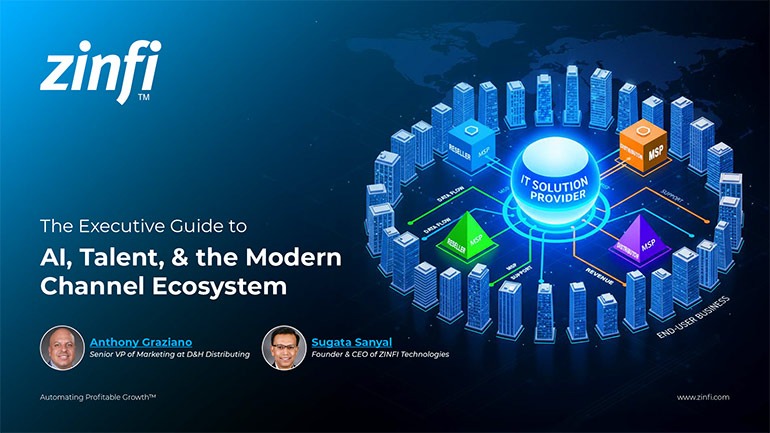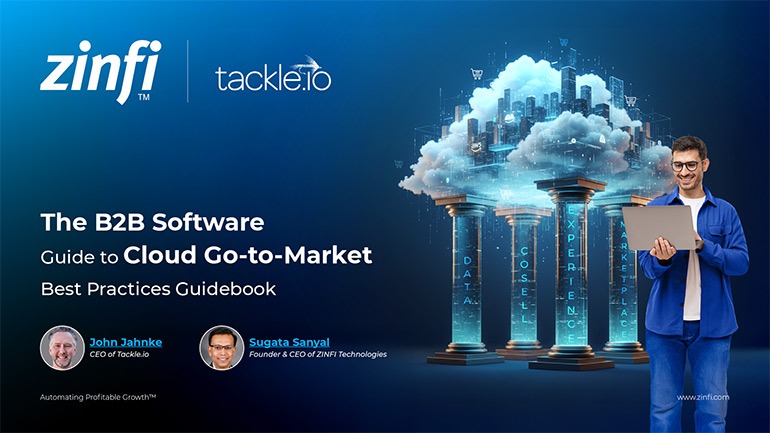Best Practices Articles

Why PRM Software Needs To Have Great Incentive Management Capabilities
Over the last decade or so, a new category of software called partner relationship management software or PRM software has been evolving rapidly. What’s the primary driver behind this evolution? Organizations are recognizing the need to build a direct sales force that can increase their reach and drive sales at a lower cost. PRM software tends to address four basic areas of partner lifecycle management: partner recruitment, partner engagement, partner enablement and partner management.
In this article, we will explore how to effectively manage incentive programs that are designed to enhance partner behavior and performance. As part of that discussion, we’ll examine the core requirements and capabilities of PRM software in more detail. But before we begin to specifically address incentive management, let’s talk a bit about channel management, and why it’s so complex. (For a more detailed discussion of the challenges of channel management, please refer to our on the topic.)
Challenges
At a high level, when a company is selling through an indirect reseller channel or a franchise network in multiple cities or even countries around the world, it will likely have to deal with various types of partners who sell into different segments and verticals, and these partners may have different sales philosophies. Some may sell a lot, some may sell a little and some are in between. Different organizations may have different sales requirements. Most importantly, the sales programs may also be changing on a quarterly basis. As an organization introduces new products, and as it acquires new companies and capabilities, it may have to drive sales by launching new programs designed to change behaviors and by offering rewards for specific behaviors. Just as employee incentives are critical in driving performance within the organization, partner incentives are an essential element in driving the performance of partners.
There are basically three types of incentive programs that companies need to manage:
- Market development funds (MDF). These are funds that are given to a partner—usually based on their sales volume—to engage in additional marketing activities to generate demand.
- Rebates. These are provided when a partner’s sales exceed a specified level: the higher the level of sales, the larger the rebate and the better the partner’s margin.
- Sales rewards. These are typically given to individuals who achieve large sales volumes. The goal with these rewards is to ensure that each sales rep or technical rep is financially incentivized to drive adoption of certain products and solutions.
Interestingly, most vendors today still manage these incentives using email or Excel files or other types of tools, and they lack an automated infrastructure to drive the process. Because these tools are not integrated and not designed specifically for handling partner relationships, managing and measuring the ROI from incentive programs is a major challenge for many organizations—and that’s where PRM software can make a significant difference.
Solutions
How can PRM software solve this problem? It allows a vendor to significantly streamline activities associated with people, processes, programs and automation.
- Programs: Channel programs tend to fall into the categories we discussed earlier: MDF, rebates and sales rewards. For these programs to be effective, they need to be closely aligned with sales and marketing objectives. For example, when a company launches a specific product, it may want to provide incentives of various types or levels simultaneously. They may offer development funds to a specific group of partners who are most capable of selling those products. In addition to MDF, they may give rebates to partners that sell at a certain level. They might also offer sale rewards to reps, who will likely have to learn how to sell a new product and may be motivated by financial incentives to do so. When managing incentives at these various levels, alignment of various programs is critical. That’s where PRM software comes in, giving vendors an easy way to quickly set up an incentive program, track it over time and improve it.
- People: When we talk about incentives, we are not just talking about partners. Incentives may also be provided for internal sales people, channel account managers, distribution managers and other people from within the organization who are supporting a partner in their efforts to sell something new or sell specified products. In that case, an incentive management system should allow the vendor to set up sales incentives and track performance, not just for external entities like their channel partners, but also for their own internal personnel. Again, PRM software can help significantly.
- Processes: When a channel program needs to be set up, typically it is done manually. Perhaps a campaign site is created, an email goes out and sales people may be given scripts to use as they reach out to educate partners. Good PRM software will allow you to automate and streamline these processes. For example, vendors can use the software to set up microsites with different channel programs and incentives programs, and it can accommodate strategies to drive these programs via sales kits and other sales enablement tools in an efficient, compact way. Once programs have been launched, PRM software can provide tracking tools to monitor adoption rates at a detailed level. How many partners are engaging in a specific program? How many have signed up for additional training? Have they set up demos of products and services? How effective are the programs in terms of sales? All of this can be measured and tracked over time so that organizations can see which programs are most effective.
- Automation: When the goal is to streamline the management of incentives via programs, people and processes, automation is what makes it all happen. Automation can be a huge help to vendors who wish to track their relationships with their partner base in an integrated and efficient way. Automation allows them to run incentives programs across multiple countries, various types of partners, different segments and verticals, and organizations with different sales philosophies and changing sales requirements. With PRM software, companies can automate and keep track of these diverse and dynamic elements in a single online interface, thus reducing the labor costs involved in managing multiple programs simultaneously on the vendor side, as well as increasing the effectiveness of the programs and boosting ROI. The vendor can see at a glance which programs are working well and which are not, and then decide which programs to drop or continue.
These are just a few of the ways in which PRM software can significantly help vendors manage their incentive programs.
Best Practices Guidebook
 Modernizing Channel Marketing: AI and Ecosystem Enablement Best Practices
Modernizing Channel Marketing: AI and Ecosystem Enablement Best PracticesDownload for FREE
 The Channel’s Shift to Partner-Led With AI Best Practices
The Channel’s Shift to Partner-Led With AI Best PracticesDownload for FREE
 Hyperscalers, ISVs, and AI: Shaping the Future of B2B Software Distribution
Hyperscalers, ISVs, and AI: Shaping the Future of B2B Software DistributionDownload for FREE
 Definitive Guide to a Partner Ecosystem-First Sales Strategy
Definitive Guide to a Partner Ecosystem-First Sales StrategyDownload for FREE
 The Partner-Led Digital and AI Transformation Best Practices
The Partner-Led Digital and AI Transformation Best PracticesDownload for FREE
 Startup Talent Recruitment: Hiring Missionaries, Not Mercenaries
Startup Talent Recruitment: Hiring Missionaries, Not MercenariesDownload for FREE
 The Future of Partner Relationship Management with AI in Partnerships
The Future of Partner Relationship Management with AI in PartnershipsDownload for FREE
 Cybersecurity for the 99%: Strategies from the Frontline
Cybersecurity for the 99%: Strategies from the FrontlineDownload for FREE
 Mastering Partner Relationships: A Strategic Approach to Business Growth
Mastering Partner Relationships: A Strategic Approach to Business GrowthDownload for FREE
 Mastering Partner Relationship Management: Keys to SaaS Channel Success
Mastering Partner Relationship Management: Keys to SaaS Channel SuccessDownload for FREE
 Navigating the AI Revolution: Guide for Partners in the Microsoft Ecosystem
Navigating the AI Revolution: Guide for Partners in the Microsoft EcosystemDownload for FREE
 Mastering the Modern Buyers Journey: Sales Leader’s Guide to AI & Engagement
Mastering the Modern Buyers Journey: Sales Leader’s Guide to AI & EngagementDownload for FREE










